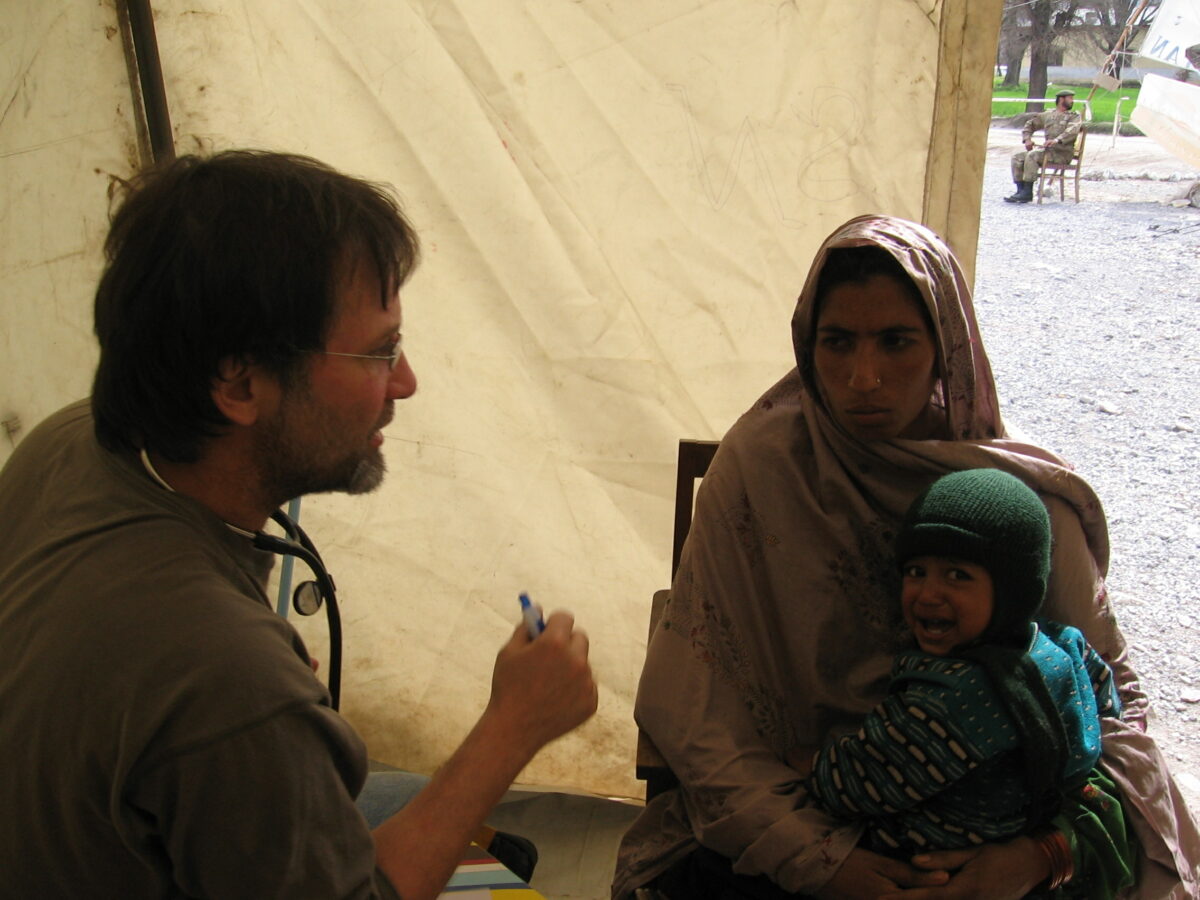Consumerism across all industries has drastically changed the way professionals need to market their products or services, and the healthcare industry is no exception. With so many options available to patients today, healthcare facilities and companies must go the extra mile to market their business if they want to continue attracting and retaining new customers.
This is especially true for smaller, private practices. The field of private medicine is even more niche, which means you have to do even more to stand out against larger healthcare companies. It’s all too easy for someone to do a search and find the bigger, more popular facilities that can address their needs, but it’s much harder to find the smaller places that offer more specialized care and services.
The only way to make yourself known among the myriad medical solutions providers, general practitioners, and healthcare specialists, is to engage in marketing yourself. Marketing is essential for private medical practices for two main reasons — the first is somewhat obvious, and it’s the axiom that you can’t sell anything without marketing it first. Sure, you might be generated leads through referrals, but you can’t rely on others to market for you forever. The second reason is that your competitors are already doing it. They’re already fishing in your pond, and you’re never going to catch any fish without casting a line yourself.
Even if you are only comparing your business to other private practices, it is still a competitive market. Just because you offer specialized services does not mean you can simply sit and wait for patients to find you. You have to actively put your services out there and market them in a way that shows patients why they should choose your business over other private practices.
What is Medical Practice Marketing?
Marketing is the practice of using strategic outreach and communications to attract and retain customers. For healthcare workers and the private medical practice field, this specifically involves developing a marketing strategy that shepherds people through their healthcare journey from start (when they are just prospective patients searching the internet) to finish (or for as long as they remain a client/patient).
Some of the best medical practice marketing strategies utilize multi-channel tactics to target specific markets through the use of online and offline efforts to drive engagement. The more places your marketing is, the more new patients you will attract.
What Medical Practice Marketing is Not
To further help you understand what marketing is and how it can help your practice, let’s consider some common marketing misconceptions which could be influencing your hesitance about developing your own marketing strategy:
1. Marketing Is Too Expensive
Marketing is neither expensive nor inexpensive. Like anything you do or buy for your business that offers you a return on your investment, marketing is what you put into it.
If you buy a piece of cheap medical equipment, it might not really bring you the results you were hoping for, which means it might not end up being worth the money you paid for it. But if you buy the higher priced piece of equipment that is more reliable, it is a larger spend upfront, but in the long run, it’s not really expensive because it gets you a much higher return on your investment.
In this same vein, good marketing isn’t really expensive because of what it gives you; good marketing can be low-cost and still significantly boost your return on investment (ROI). No matter the cost, good marketing brings you more clients and patients. It increases your profits.
Of course, it’s also all about how you spend your money on marketing. If you have a quality, well-thought-out strategic plan, you can be more mindful of your budget and make the money that you do put into marketing go a lot further for you.
But if you simply throw your money at marketing that you haven’t really put the time and effort into, then yes, you might end up wasting that money, which means you might end up having made an expensive purchase that doesn’t deliver results.
2. Marketing Is About Quantity, Not Quality
As marketing has increased in popularity in recent years, many believe that you just need to constantly produce as much marketing content as possible to stay ahead of the game. But this just isn’t true.
A little time spent on quality marketing will go further than a lot of time spent on poor marketing. In general, good marketing still takes time and effort, but you don’t need to constantly churn out content if you do things well the first time around.
As a private medical practice, you don’t have the time to be a content-generating workhorse. And you don’t need to be. If you simply put in a little extra time and effort upfront, then you will have higher quality content that is more reliable and will deliver results over time for a longer period.
3. Marketing Is Only About You and Your Business
While your goal with marketing your practice might be about improving the success of your practice, your marketing should not center around you and your business. Marketing is really about your customers — your patients.
If you stand and shout, “hey, look at me, come look at my business and what we’re doing,” you might initially garner some attention, but today’s consumers are more discerning than they used to be. This means the marketing experience really needs to be about them, what your business can offer them, and how you benefit them — not the other way around.
If customers or patients don’t think you actually care about them and their needs and you are just trying to make a sale, then they won’t stick around. So your marketing shouldn’t be about you; it should be about them and what you can do for them. In fact, investing in community building is one of the most effective ways to humanize your brand — give to your customer base, and they will be much more likely to give you their business.
4. Marketing Isn’t Substantial Enough
While content marketing, such as the content on your website and blogs, is a big part of marketing, it is not the only part of it. If you want to expand your reach and generate more revenue, your marketing needs to be multichannel or a mix of different mediums.
A good website and website content is a great place to start, but simply building a website and paying for some blogs every now and then will only get you so far. Again, what you get out of your marketing will depend on what you put into it.
So when creating a strategy, consider all the avenues through which you can market your practice. This includes digital marketing, such as your website, blogs, e-newsletters, emails, social media, videos, podcasts, digital ads, etc., as well as traditional marketing, like print advertising and tv and radio ads.
The more varied your marketing, the more it will engage and attract your target audience. Consumers today like to be wowed. If you do the same thing over and over again, they will lose interest. As such, it might even be worth it to hire a third party that specializes in multichannel marketing solutions — at the very least, you know that you’ll be getting fresh and effective strategy and ideas.
How To Build a Quality Medical Practice Marketing Strategy
Now that you know the “why,” it’s time to start considering the “how.” How do you create quality marketing for your private medical practice?
There are so many ways you can go about this. There is no one right way to build a marketing strategy. And in many ways, it can depend on the specific needs of your individual practice. But we’ll cover the basics with a few of the best medical practice marketing strategies.
1. Build a Consistent Brand
Consistency is key in brand strategies and marketing, especially in the healthcare industry. Your audience needs to know exactly what to expect from you and to walk away from their experiences having had those expectations met. The way to do this is to build a strong and recognizable brand that delivers on its promises.
What is your brand—your practice all about? What do you care about? What kind of experience do you offer your patients?
Your customers need to know who you are — that they can trust you, and that you will deliver the experience that you said you would. This not only boosts your brand’s awareness but will result in higher customer retention rates.
2. Create a Quality Website
Seamless digital patient experiences are a must in today’s world of digitally savvy consumers. In healthcare, this starts with a quality website that patients can easily navigate and find exactly what they need. Websites are also a great way to collect consumer data that you can use to improve your marketing.
Think of your website as the face of your business. It is often the first thing a prospective patient sees when looking into your business, so it needs to make an impression. If your website isn’t good, chances are people won’t bother to come visit your practice in person.
A quality website with a seamless digital experience can make all the difference in the healthcare industry. If your website isn’t professional and engaging, then the customer will assume that your business isn’t professional and engaging.
3. Optimize Your Content to Improve Search Rankings
Again, one of the first ways a prospective patient discovers a new medical practice is through their website. The way they find that website is by conducting a search using sites like Google.
If you want your practice to be among the first results that pop up after someone performs a search, you need to be using SEO — Search Engine Optimization. SEO involves using keywords and phrases in your content to help people find you when they are looking for certain services.
For example, if someone needs help with a certain medical condition like diabetes, and your practice specializes in endocrinology, you would want to use specific keywords or phrases in your content related to that topic so your website will come up in search results for that person. If you don’t optimize your content, your website likely won’t rank high compared to your competitors, which means people won’t discover your practice as easily.
4. Boost Your Social Media Presence
Billions of consumers use social media today, and not just for socializing and posting pictures with their friends. Social media is a tool for discovering new brands, products, and services. So if your medical practice isn’t on social media, you are missing out on a large audience.
The notion that social media is unprofessional is outdated. Everyone is on social media, and it is an excellent way for your practice to engage your patients and prospective patients by posting tips, news, and other noteworthy healthcare information. This helps users keep you in mind when they require medical services.
Wrapping Up
These are just some of the tactics you can use to get started, but the important thing to take away is that your private medical practice needs quality marketing. And that marketing can significantly boost your chances of success and help you attract and retain more patients. The healthcare industry is always changing, so it’s essential to stay on top of marketing to ensure your private practice stays relevant and competitive.
 Katie Brenneman is a passionate writer specializing in lifestyle, mental health, activism-related content. When she isn’t writing, you can find her with her nose buried in a book or hiking with her dog, Charlie. To connect with Katie, you can follow her on Twitter.
Katie Brenneman is a passionate writer specializing in lifestyle, mental health, activism-related content. When she isn’t writing, you can find her with her nose buried in a book or hiking with her dog, Charlie. To connect with Katie, you can follow her on Twitter.
Disclaimer: The viewpoint expressed in this article is the opinion of the author and is not necessarily the viewpoint of the owners or employees at Healthcare Staffing Innovations, LLC.
With a Bachelor’s in Health Science along with an MBA, Sarah Daren has a wealth of knowledge within both the health and business sectors. Her expertise in scaling and identifying ways tech can improve the lives of others has led Sarah to be a consultant for a number of startup businesses, most prominently in the wellness industry, wearable technology and health education. She implements her health knowledge into every aspect of her life with a focus on making America a healthier and safer place for future generations to come.







 J. Michael Jones started writing in the early 1980s, publishing over thirty articles in national medical journals, and The Stones of Yemen is his eighth book, five of them fiction. He had a thirty-eight-year career as a physician associate and worked in refugee camps in Pakistan, Afghanistan, Cyprus, Oman, UAE, Egypt, and Nepal. In addition, he hosted twenty Yemeni students over two years in the U.S. Besides his medical studies, he has a degree in Arabic from the American University in Cairo, which was invaluable during the research for this book. Michael resides with his wife Denise in Washington’s San Juan Islands, where he writes full time. They are the parents of five grown children and one hairy Saint Bernard.
J. Michael Jones started writing in the early 1980s, publishing over thirty articles in national medical journals, and The Stones of Yemen is his eighth book, five of them fiction. He had a thirty-eight-year career as a physician associate and worked in refugee camps in Pakistan, Afghanistan, Cyprus, Oman, UAE, Egypt, and Nepal. In addition, he hosted twenty Yemeni students over two years in the U.S. Besides his medical studies, he has a degree in Arabic from the American University in Cairo, which was invaluable during the research for this book. Michael resides with his wife Denise in Washington’s San Juan Islands, where he writes full time. They are the parents of five grown children and one hairy Saint Bernard.

